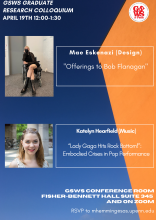Mae Eskenazi
Offerings to Bob Flanagan
Monitor, Speaker, Low Boy stand, Mies Van Der Rohe Leather chair, Leather cord, Bed(s) 1 hour 1 min 11 seconds 2021-2022
Offerings to Bob Flanagan interrogates pain as an endurance performance, incessant conjuring, and connective tissue as both subject and witness. Shot from the perspective of the bedroom, the video proposes the sick bed as a horizon both spatially and temporally, calling upon Tala Khanmalek and Heidi Andrea Restrepo Rhodes’s proposition of “bedlife.” 1 The video project spans across one year from November 8 th 2021 to November 2 nd 2022, collecting a year of pain journals, memory recollections, and confessions that mirror Bob Flanagan’s 1995 Pain Journals. 2 The project summons Bob Flanagan as an art historical reference and ghostly figure in conversation with artists and theorists such as Johanna Hedva, Leah Lakshmi Piepzna Samarasinha, Jasbir Puar, & C. Riley Snorton. Offerings to Bob Flanagan investigates the prospect of witnessing by centering stamina as an embodied condition of spectatorship. Through the video’s multiple timelines, the piece becomes spatially transportive across future/past/present through crip time and flare time, while exemplifying the unspeakable conditions of pain as a corporeal sensation and affective memory.
Katelyn Hearfield
“Lady Gaga Hits Rock Bottom!”: Embodied Crises in Pop Performance
At the 2015 Oscars, Lady Gaga performed a medley of songs from The Sound of Music (1965) free of auto-tune, showcasing her vocal talent in undeniable fashion. The performance heralded a career turn, from synth-heavy dance pop to a softer acoustic style following her fibromyalgia diagnosis. Gaga’s work has long experimented with themes of disability, having even been criticized for glamorizing disability in her 2009 music video for “Paparazzi,” but a mid-performance injury in 2013 triggered the onset of the painful auto-immune disease fibromyalgia. Her fifth studio album, Joanne (2016), is a rumination on the fate of her paternal aunt—for whom the album is named—a gifted artist whose hands were crippled by the auto-immune disease lupus and who died at nineteen. I analyze the music of Joanne alongside Gaga’s performance of the 50th-anniversary tribute to The Sound of Music, comparing her career shift to that of Julie Andrews, the 1965 Maria von Trapp who lost her voice to a botched surgery meant to cure her vocal nodules. Theorizing Gaga’s post-diagnosis projects—including Joanne, two jazz albums with Tony Bennett, and award-winning acting roles—through the lens of disability studies, I reflect on the struggles of female artists when their bodies in crisis undermine the very art they live to produce.

 The Program in Gender, Sexuality, and Women’s Studies
The Program in Gender, Sexuality, and Women’s Studies